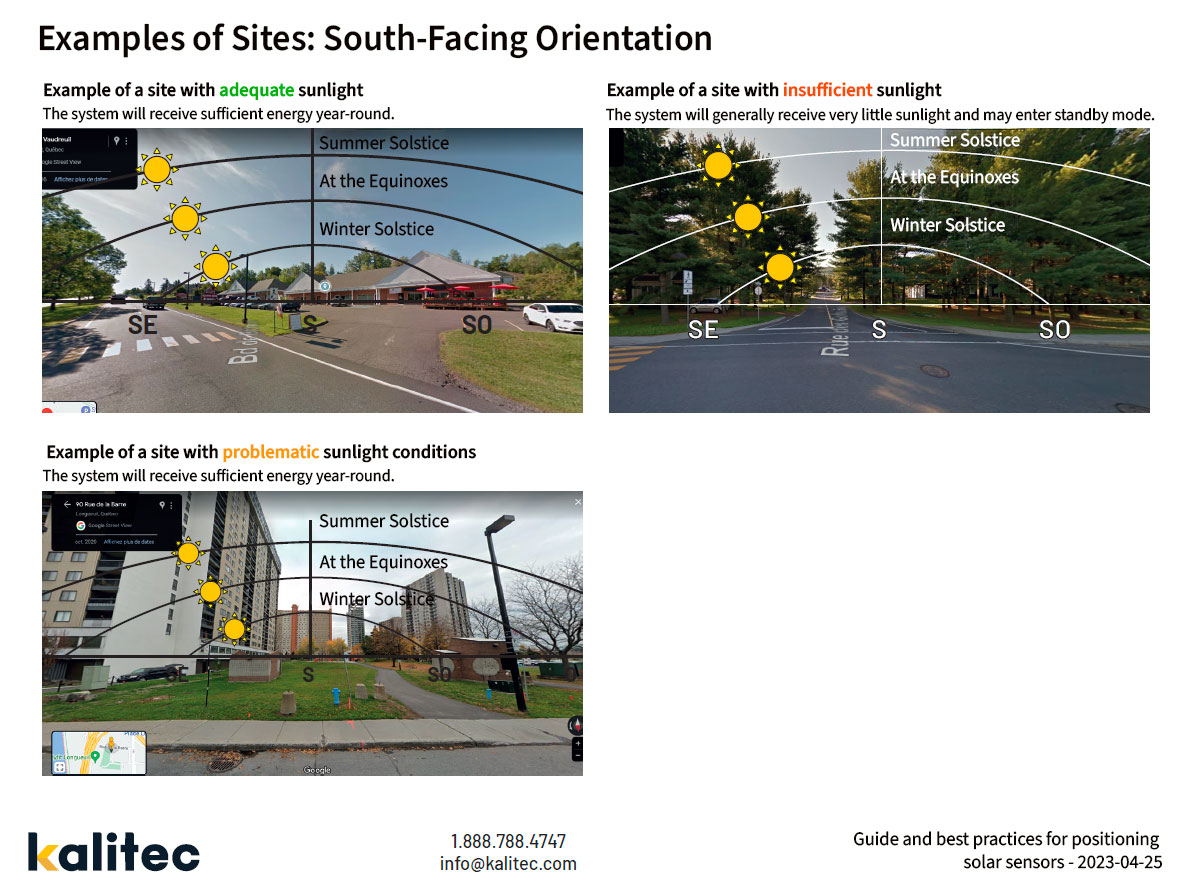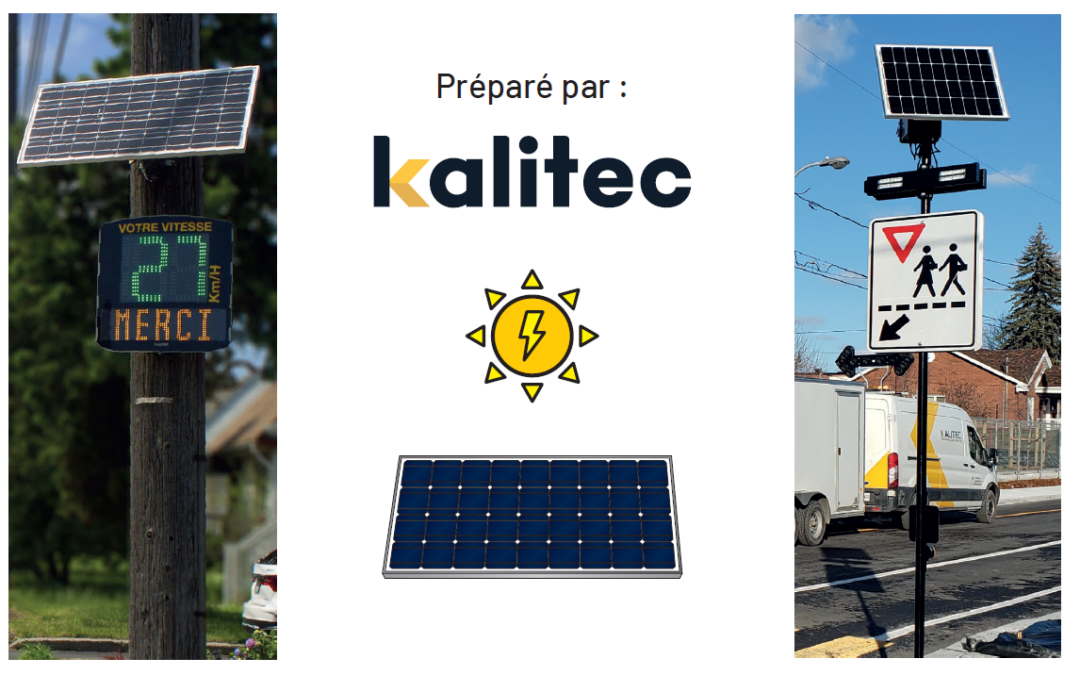The cold temperatures of winter can reduce the autonomy of solar-powered equipment by up to half. Combined with shorter daylight hours, solar-powered systems are at risk of failure.
Kalitec offers three key tips to help you keep your equipment operating efficiently all year long.
Tip #1: Choose a Strategic, Fully Sunlit Location
Make sure the installation site is clear and unobstructed, keeping in mind that the sun’s position is lower in the sky during winter. Even partial shade from trees or nearby buildings can reduce a solar panel’s efficiency by up to 95%.
It’s also essential to ensure that your solar panel is facing due South. This orientation maximizes sun exposure throughout the day, allowing for better battery charging performance.
When selecting your installation site, don’t hesitate to contact us. Our team will gladly help you find solutions that allow you to place your equipment where you want it, while optimizing its performance.

Tip #2: Maintain Optimal Sunlight Conditions
Each year, make sure the installation site remains ideal in terms of sunlight exposure.
For example:
- Trim any branches that now cast shade on your solar panel.
- Relocate the equipment if new construction significantly affects sunlight conditions.
Tip #3: Choose the Right Batteries
At Kalitec, all our solar-powered solutions are equipped with sealed AGM batteries.
Renowned for their excellent resistance to cold, these batteries deliver optimal performance throughout the year. Unlike lithium batteries, AGM batteries can be safely used in temperatures as low as -20°C.
In general, a battery’s lifespan is about five years. Therefore, when early signs of reduced autonomy appear, it’s important to replace them as soon as possible. Doing so ensures your products continue to operate at full capacity all year long.

